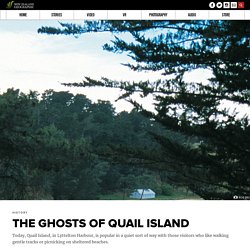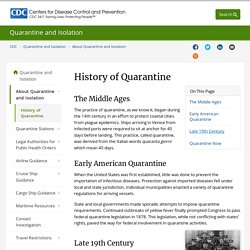

New Zealand Government. 1918 Influenza Epidemic – How Christchurch coped. Epidemics. Epidemics are infectious (easily spread) diseases that spread quickly in a large area, or country.

They can cause widespread sickness and even death. When an epidemic gets out of control and spreads to many countries or regions of the world, it is called a pandemic. Cholera, SARS and COVID-19 are some examples of epidemics that spread across the world to become pandemics. General websites For the latest information about the COVID-19 pandemic in New Zealand, please visit Unite Against COVID-19, the official website from the Government of New Zealand. The websites below will show you where to find information about different types of epidemics, their causes, and treatments. DKfindout This website covers many topics in simple and easy to understand language. Use the search bar at the top of the page to search for 'disease'.Go to the page called Germs and disease.You will find links to pages on viruses and how we fight germs. Britannica School Primary Kids' Health Ducksters New Zealand sites Books. Plague (Black Death) bacterial infection information and facts.
Plague is one of the deadliest diseases in human history, second only to smallpox. A bacterial infection found mainly in rodents and associated fleas, plague readily leaps to humans in close contact. Plague outbreaks are the most notorious epidemics in history, inciting fears of plague’s use as a biological weapon today. Stages of plague For hundreds of years, what caused plague outbreaks remained mysterious, and shrouded in superstitions. Black Death - Causes, Symptoms & Impact. Polio and rubella: Devastating effects of polio and rubella have faded from our collective memory. Lying in bed, sore and feverish, Mervyn Dykes wanted to cry.

But the seven-year-old was too hot and too dry to produce tears. Dykes had polio, a crippling and potentially fatal infectious disease. "My mother was the only one who broke the quarantine to look after me. I told her 'I don't want to die' and I remember her promising me I wouldn't. " READ MORE: * Rubella victim urges vaccination during measles outbreak * Auckland measles outbreak: Government rejects sanctions or compulsion over vaccinations * Why history forgets the NZ polio epidemic of 1916 * How surviving polio formed my view on protecting others from future disease * New light on an old disease still lived in the now Dykes was one of the lucky ones, coming through it relatively unscathed.
In New Zealand's worst year for polio fatalities, 173 people died. More than 1000 people were infected, around 70 died, schools and other facilities were closed and there stern warnings against swimming in harbours.

The polio epidemic that gripped New Zealand for more than two years after World War II was considered the most persistent outbreak of the feared disease that the country had experienced up to that time. But for numbers of cases and deaths, the epidemic of 1947-49 wasn't the worst. The most deaths in one year were in 1925, when 173 people died. This Thursday marks 70 years since children were allowed back to school in central Auckland after an enforced closure through the summer and autumn. Caused by a virus, polio is an incurable disease whose symptoms can range from none at all (95 per cent of cases) through to paralysis (up to 2 per cent) in limbs or the respiratory system. School.ebonline.co. The ghosts of Quail Island.
The hunter tenses, shotgun in hand.

The dog is keen, nose to the ground, tail wagging feverishly. He’s close. The rabbit bolts from the jumble of macrocarpa stumps in a desperate bid to escape. Seconds later it’s all over. Hunter and dog stoop over and almost respectfully examine the fallen quarry. Not too many New Zealanders living outside of Canterbury would know much about Quail Island or its whereabouts (though if you know where to look, the island shows prominently in the “fly-by” graphics of Christchurch in television weather presentations). Quarantine station, 1911 – Epidemics. History of Quarantine. U.S.

Public Health Service Officers, like those shown in this image taken circa 1912, wore uniforms while performing quarantine station duties beginning in the late 19th Century. Photo courtesy of the National Library of Medicine. Late 19th Century. Quarantine centres and prisons. Islands near New Zealand’s main ports were useful for keeping people in isolation.

Ships often carried people with contagious diseases, and crew and passengers would be interned at nearby islands until they were cleared. Livestock were also kept on islands until they could be declared disease-free. In wartime, the islands became jails for prisoners of war and ‘enemy aliens’. Dunedin – Quarantine Island/St Martin Island In 1863 the ship Victory, carrying people ill with smallpox, arrived at Port Chalmers. Christchurch – Ōtamahua (Quail Island) As the Canterbury settlement grew, quarantine facilities for immigrant ships were built in Lyttelton Harbour, first on tiny Rīpapa Island in 1873, then on Ōtamahua (Quail Island). Children with diphtheria from a Lyttelton orphanage were isolated there in 1879–80. In 1906 a Christchurch man with leprosy was sent to the island.
While the lepers were confined to one small area, the island was also being used to quarantine livestock. Lonely leper.